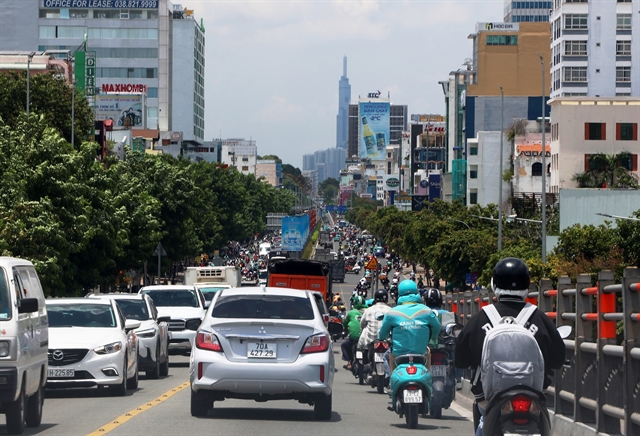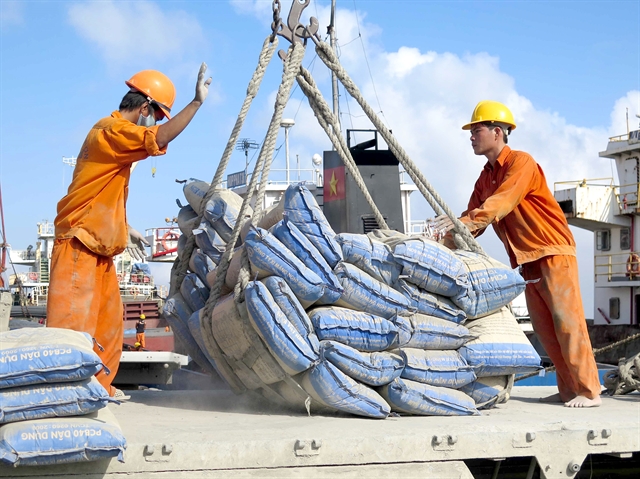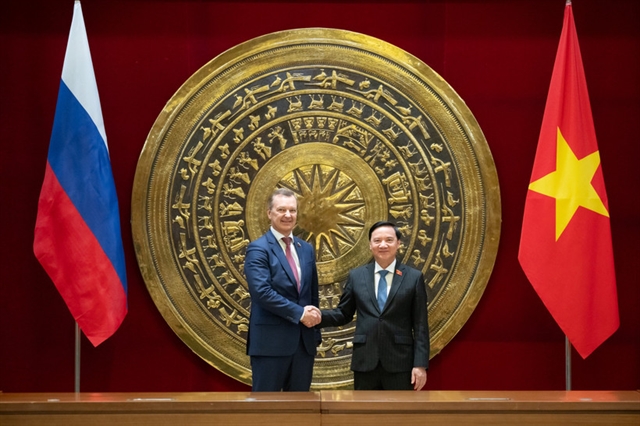 Environment
Environment

 |
| A worker at VICEM Hà Tiên Cement Joint Stock Company in the Mekong Delta province of Kiên Giang. VNA/VNS Photo Huy Hải |
HÀ NỘI — The potential for co-processing waste, including non-recyclable plastic, as an alternative fuel in the cement industry in Việt Nam is huge.
Việt Nam is a major cement producer with a capacity of more than 100 million tonnes of cement per year, said Associate Professor Lương Đức Long, deputy president of Việt Nam National Cement Association.
He spoke at a workshop on the co-processing of alternative fuels and raw materials in the Vietnamese cement industry, held by the Norwegian Embassy on Thursday morning in Hà Nội. The workshop is part of the Ocean Plastic Turned into an Opportunity in Circular Economy (OPTOCE) Project funded by the Norwegian Government.
Long said fuel consumption for cement production in the country is now high.
The country now has 82 clinker kilns in operation, which together each year consume over 10 million tonnes of anthracite coal, he said.
The current use rate of alternative fuels in the whole cement industry remains low, although the Government of Việt Nam has the policy to increase the rate by 15 per cent by 2030 and 30 per cent after that, he said.
Long also said under the Basel Convention, co-processing is an activity “that can lead to resource recovery and resultant reduction in the use of conventional fuels and raw materials through substitution” of the following categories R1 (“use as a fuel or other means to generate energy”) and R5 (“Recycling/reclamation of other inorganic materials”).
He said there are many waste treatment methods as raw materials and alternative fuels.
The method of waste co-processing in the cement industry is a solution with many advantages to thoroughly treat all types of waste, including household waste and industrial waste, especially hazardous waste, thanks to a system of incinerators, he said.
Data from the Việt Nam Environment Administration shows that Việt Nam has issued licenses for co-processing wastes for four cement manufacturers of Holcim Hòn Chông Cement Factory; Thành Công Group Joint Stock Company; Nghi Sơn Cement Company; and VICEM Hà Tiên Cement Joint Stock Company.
Advantages, disadvantages
According to Long, technological advantages in treating waste using cement production include high-temperature stability, long residence time, high alkaline reactants, 24-hour daily emission monitoring system, large capacity, no ash and no disposal.
Besides, there is also economical and environmental efficiency when co-processing waste is applied in the cement industry. For example, it eliminates dioxin, reducing CO2 emissions by utilising waste.
In terms of economic benefit, he said that co-processing waste will help reduce waste storage and handling costs, reduce waste burial and disposal space, take advantage of heat energy, and reduce coal consumption.
However, he said the biggest barriers to using waste for cement production consist of ensuring stable waste collection and supply to cement manufacturers and co-processing technology in clinker incinerators.
Đỗ Xuân Thịnh, technical expert of Việt Nam National Cement Corporation (VICEM), also pointed out some disadvantages that the cement industry has to face when it applies co-processing waste currently.
He said there is no stipulation relevant to granting costs for waste treatment in the cement production process and no supporting mechanisms and policies for entities participating in handling and treating ash, slag, synthetic gypsum, wastes and sludge.
In addition, waste is not sorted out, collected and pre-processed by specialised entities to meet requirements for supplying and co-processing cement kilns. This results in unstable quality and low supply capacity.
 |
| Workers load cement packages for export at Thị Nại Port in the coastal central province of Quy Nhơn. VNA/VNS Photo Viết Ý |
Recommendations
Thịnh suggested that the Government, the Ministry of Construction and relevant authorities review for amendments and supplements of some stipulations concerning the waste treatment and co-processing in cement production to create more favourable conditions for cement manufacturers participating in co-processing activities in the coming time.
It is necessary to amend Decree No. 40/2019/NĐ-CP to include cement production facilities in the provincial environmental protection and construction plans so that the cement manufacturers could smoothly participate in waste co-processing activities.
Because the decree currently regulates that the location of industrial ordinary solid waste co-processing facilities has to belong to the provincial environmental protection and construction plans. While the location of cement manufacturers now does not belong to the plans.
He said that it is advised to arrange preferential capital sources for investment in equipment and machinery for the waste treatment process and support transportation costs for wastes that have been stored at landfills in cities and localities.
It needs to supplement regulations and instructions on labelling green and environmentally friendly for the products of cement manufacturers that use waste as alternative materials, he said.
Đỗ Tiến Đoàn from the Department of Waste Management under the Việt Nam Environmental Administration said the ministry plans to introduce general waste co-treatment standards, including general waste and plastic waste and issue specific regulations for the fume treatment system in cement kilns.
He said that the ministry would also regulate the maximum ratio of waste used in the co-processing progress compared to the input capacity or raw materials and fuel.
More specific requirements about quality control of input waste and the process of receiving, storing, sorting, mixing and pre-treating before co-processing will be given, he said.
Speaking at the workshop, Norwegian DHOM Mette Møglestue said through the Ocean Plastic Turned into an Opportunity in Circular Economy (OPTOCE) project that has been implemented in five Asian countries, including Việt Nam, Norway hopes to help Việt Nam’s cement industry to improve its capacity to treat non-recyclable plastic wastes, and to contribute to implementing Việt Nam’s net-zero target commitment by 2050.
Chief Scientist Dr Kåre Helge Karstensen from the Norwegian Foundation for Scientific and Industrial Research (SINTEF), who has been heading the OPTOCE Project, said co-processing in cement kilns could improve the management of non-recyclable plastic waste in Việt Nam.
He said that it reduces coal consumption in the cement industry and lowers the need for building expensive WtE (Wastes to Energy) incinerators.
More importantly, the cement industry at large can play a more important role in reducing Greenhouse gas emissions and preventing plastic wastes from ending up in the oceans,” he said.
The OPTOCE project is part of the Norwegian Development Programme to Combat Marine Litter and Microplastics. The programme intends to contribute to Sustainable Development Goal (SDG) 14.1, which states that the world should prevent and significantly reduce marine pollution by 2025.
A regional project called OPTOCE investigates how the involvement of the Cement Industry can increase the treatment capacity for Non- Recyclable Plastic Wastes in five Asian countries, including Việt Nam, thereby contributing to reducing the release of plastics into the sea. — VNS




